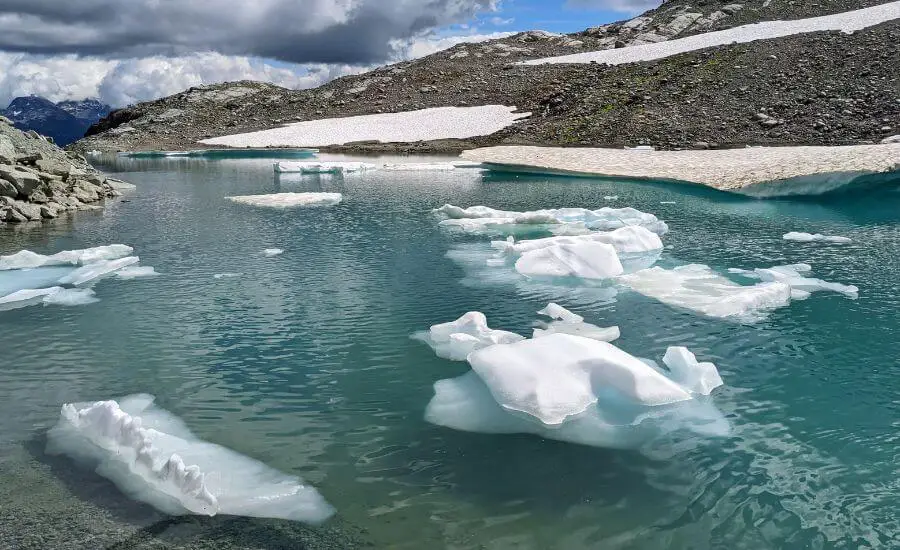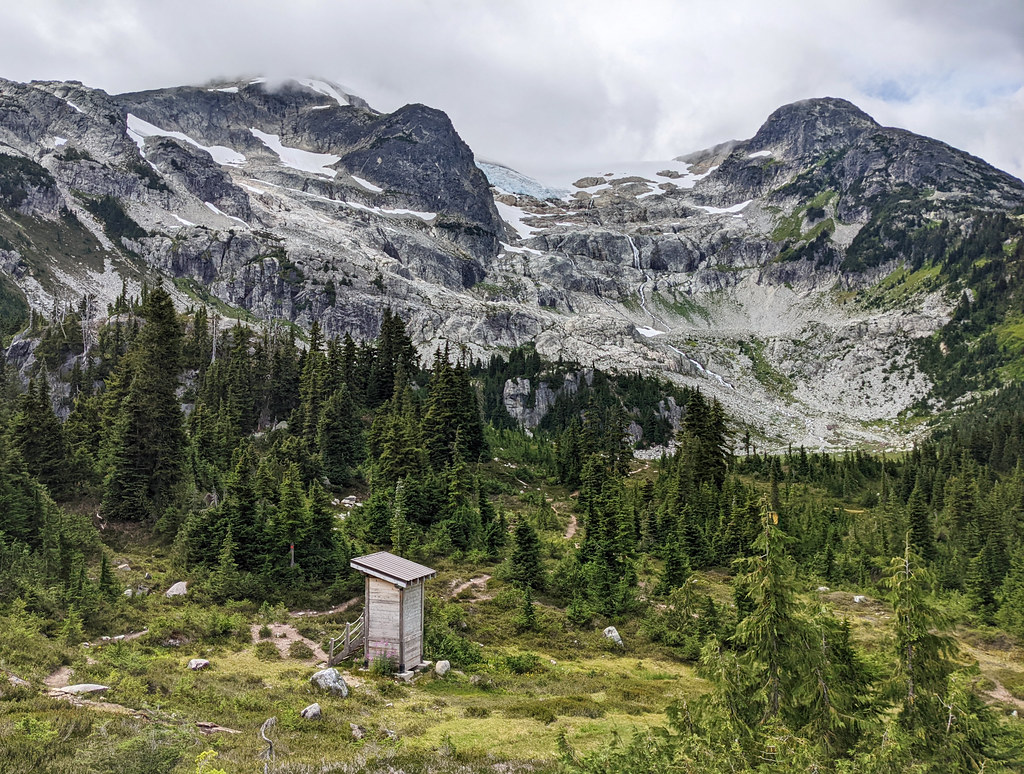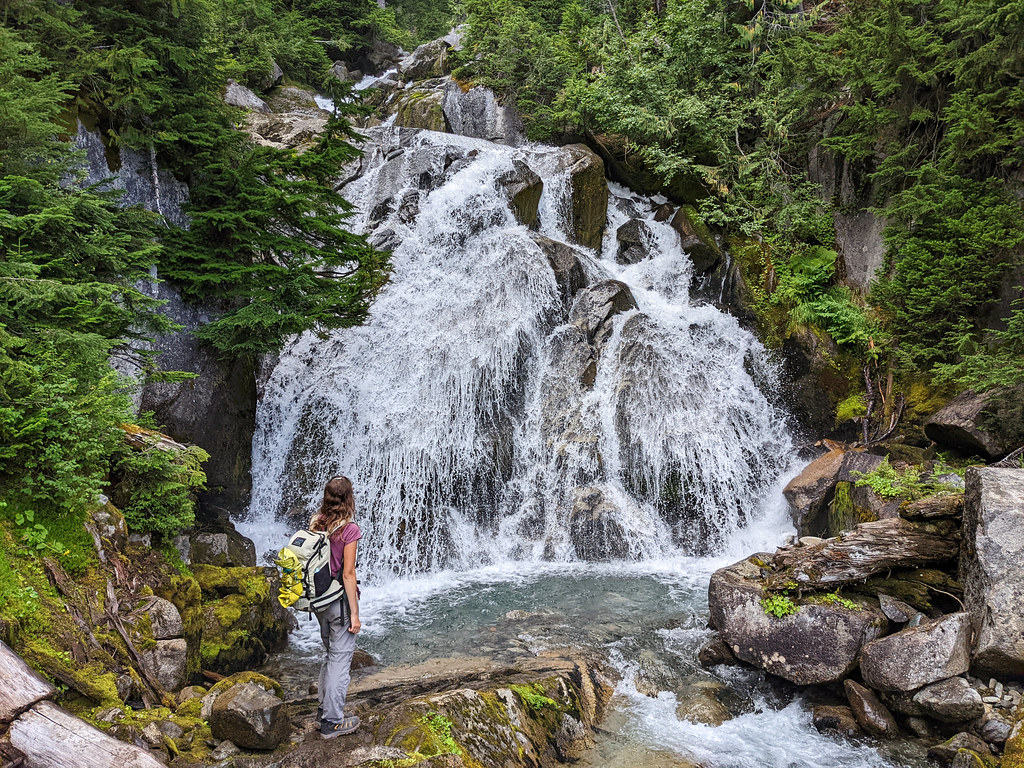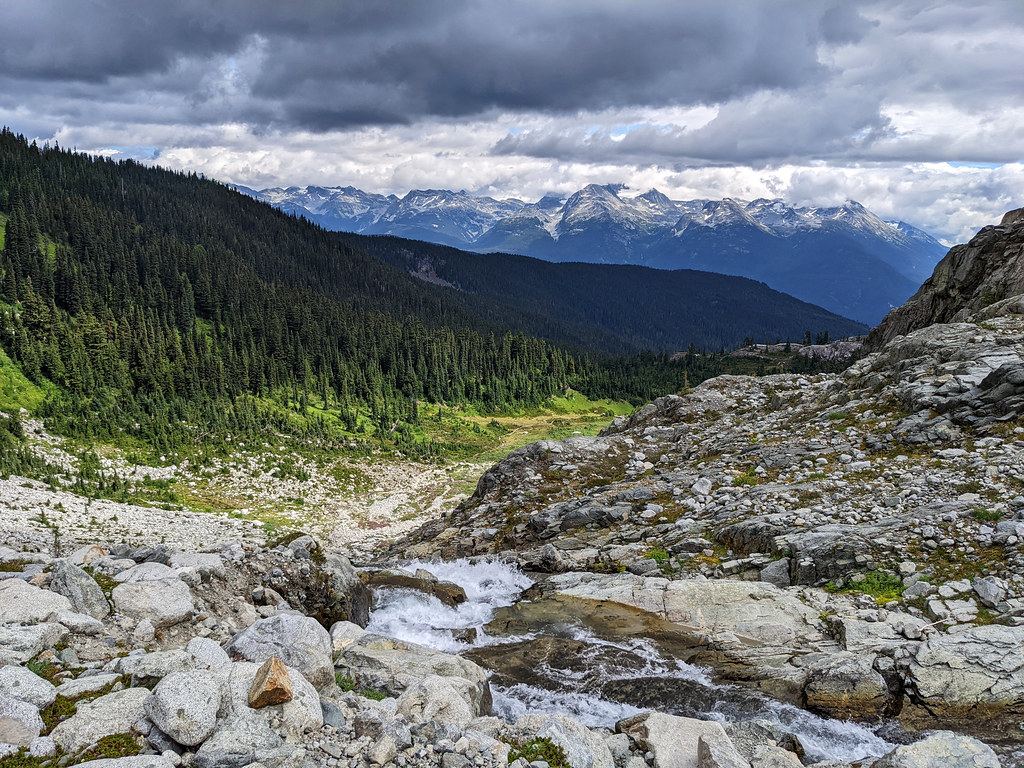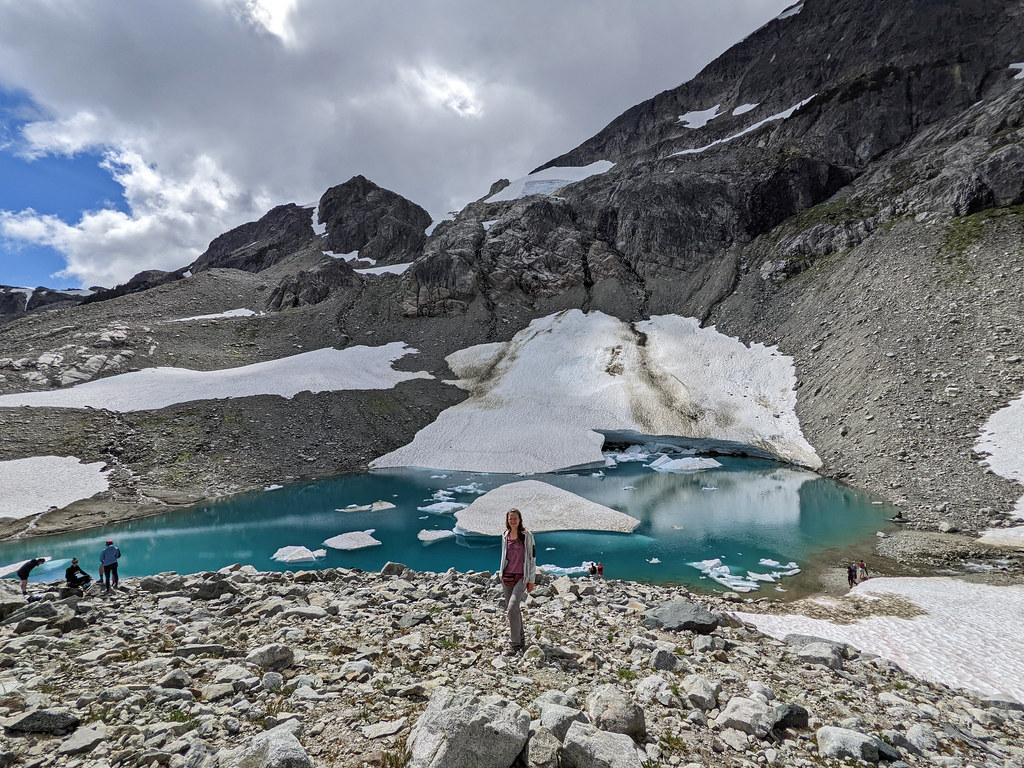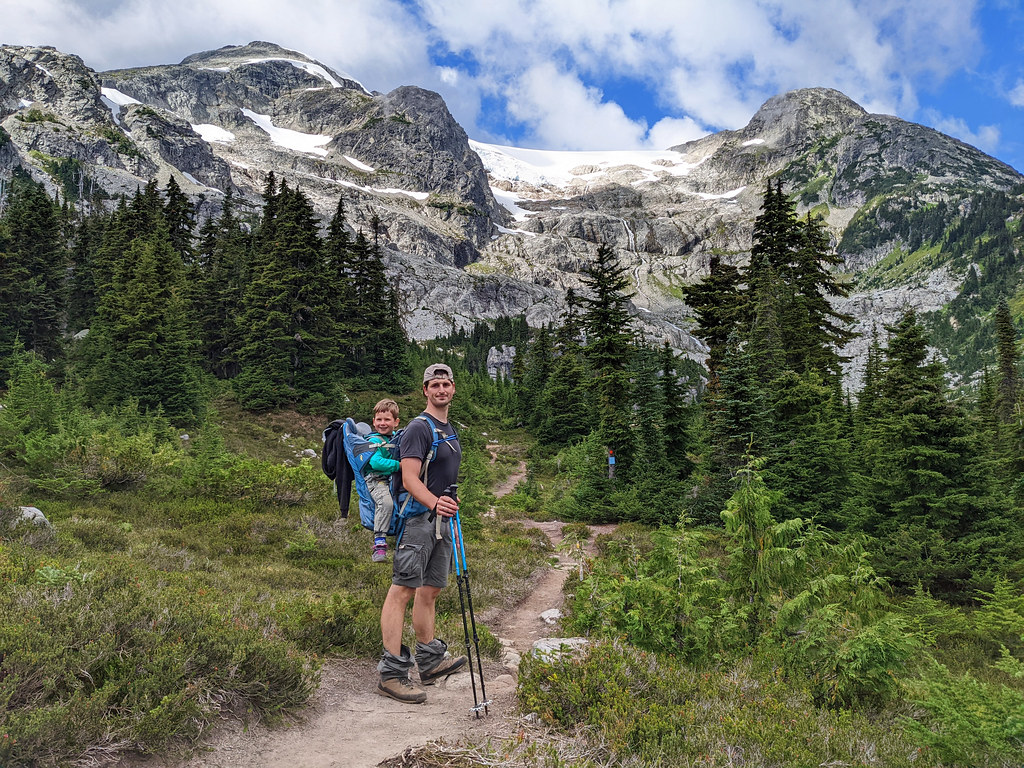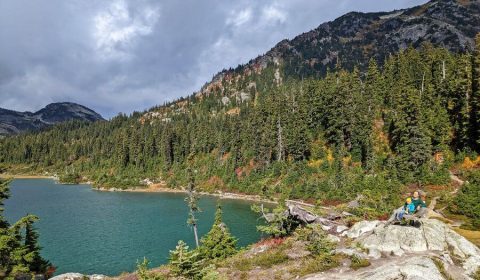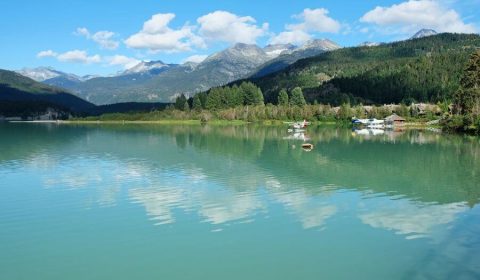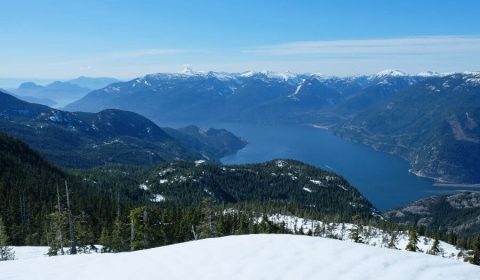Iceberg Lake is certainly lesser-known than Insta-star Garibaldi Lake, and even though it can’t compete with it in size, it can when it comes to beauty. The Iceberg Lake hike has become one of our favorite summer day trips from Vancouver.
The alpine meadows near Whistler offer lots of incredibly wonderful hikes. However, most of them are only accessible between July and September (maybe early October), they require you to cope with 1000+ meters elevation gain, and some of the trailheads are not reachable without a 4WD.
Iceberg Lake Trail, Whistler, BC – is this how the toilet looks like up there? what could I say? 🙂
Iceberg Lake trail is an easily reachable one, with the trailhead being in the village of Whistler. It has 1008 meters elevation gain, which is not easy, but not that hard either – a fun challenge for the average hiker. This post is your guide to tackle it. Ready?
Want to find more wonderful hiking trails in the Squamish-Whistler area? Check out these posts, as well:
- Garibaldi Lake Hike, British Columbia: Is It Worth The Hype?
- 12 Best Waterfalls Near Vancouver, British Columbia
- Whistler Train Wreck: A Fun, Family-Friendly, Year-Round Hike
How to access the trailhead?
The Iceberg Lake via 19 Mile Creek Trail is the usual route to the lake, and it starts at the end of Mountain View Drive. You can park there along the road, but obey parking signs to make sure you won’t get towed (parking is allowed only on one side of the road). If you can’t find a spot, search along Valley Drive. There’s no dedicated parking lot for the Iceberg Lake hike, and it’s quite popular in the summer, so arrive as early as you can.
The trailhead is exactly at the end of the dead-end road, but it’s a narrow path, overgrown by bushes, so you have to search for it in order to find it. There’s no signage either. But it soon joins a wide gravel path, then you need to take a left turn from there – this part has signs. So once you start the trail, it quickly becomes obvious, because it’s well-maintained and well-marked all the way up to the lake.
Best accommodations in Whistler:
- Luxury: The Westin Resort & Spa (top location)
- Mid-range: The Listel Hotel
- Budget: Pangea Pod Hotel (capsule hotel at excellent location)
Highlights of the Iceberg Lake hike
There are lots of trails near Vancouver that lead up to fantastic views or magical lakes. But many of them require long, exhausting and not super exciting forest grinds, with absolutely no view until the very top (looking at you, Garibaldi Lake Trail). Iceberg Lake hike is not like that.
It runs in the forest for the most part, but it offers pretty sights from time to time. Like Green Lake viewpoint, which is a short detour to a lookout, about half an hour after you started the trail. Green Lake looks gorgeous from above!
Green Lake lookout
Once you reach 19 Mile Creek, you can enjoy rushing creek views when crossing it, and there are about five waterfalls on your way up. Two of them are large enough to be named (though they are not, as far as I know), the others are nice little cascades. You need to take short detours to lookout points to see both of the largest waterfalls, and you find benches there, too. They are excellent picnic stops.
crossing 19 Mile Creek
one of the larger, nameless waterfalls
Once you hike above the forest, the landscape becomes truly spectacular: alpine meadows and peaks, snow-capped even in late summer. You can see Rainbow Mountain and Rainbow Glacier, and you’re getting closer to them with each step.
There’s a large alpine meadow before the final ascent, and it’s full of wildflowers in late summer. This part of the trail is flat, so enjoy the views and this casual walking section before the steep ascent.
The dream destination: Iceberg Lake
To reach the lake you need to conquer a steep rock boulder field. It’s the most challenging section of the hiking trail, but you can stop often to enjoy the wonderful views.
Don’t forget to look back as you hike up:
The trail ends right under Rainbow Glacier which melts into the brilliant blue lake that’s full of floating and spinning mini-icebergs during the whole summer. (Most of the icebergs melt by October though.) Actually, Iceberg Lake is usually frozen well into the summer, even until late July in colder years.
We hiked there at the end of August. It was perfect. Wildflower season. Plenty of icebergs and a turquoise lake. Chilly winds. It’s never really hot at 1640 meters, so bring a windbreaker and a warm layer. Even if you feel hot while hiking uphill, you’ll cool down once you sit for a lakeshore picnic. Or take a dip into the lake. (We haven’t even thought of it. But some people do that. I have no idea what motivates them. 😀 )
You take the same route back to Whistler.
There are other routes that lead you to Iceberg Lake, like the Skywalk North and Skywalk South trails, but 19 Mile Creek Trail is by far the most popular and most suitable for a day hike.
Hiking essentials:
- Trailhead: end of Mountain View Drive in Whistler
- Length: 20.7 km return
- Difficulty: medium
- Season to visit: July – early October
- See the trail map here!
Is Iceberg Lake trail kid-friendly?
Not exactly. It’s not a technical trail, only the last ascent requires a bit of rock scrambling here and there. But it’s long, and the steady uphill will tire young kids out. We did this hike with our 3-year-old, it’s doable. However, Csaba carried him uphill almost all the way. He was able to do most of the downhill on his own.
Whether you can do it with your kid or not depends on their abilities (and yours if you carry them) which you know the best.
Is the Iceberg Lake hike busy?
High mountain trails like the one to Iceberg Lake have very short hiking seasons. The area is snowy (and the lake is frozen over) even for most of June, so anyone who wants to conquer the trail will do so on clear weather days between July and September. The result: yes, clear days, especially clear weekend days, are busy. However, we didn’t feel it to be crowded, because people spread out on the trail and also around Iceberg Lake.
And it’s still not nearly as busy as Garibaldi Provincial Park or Joffre Lakes. You don’t need a permit for parking/access either.
What to wear hiking in the summer?
Hiking pants, preferably zip-off pants: mornings and evenings are chilly, so you’ll be happy to wear long sleeve pants, but it’s very practical if you can simply zip the sleeves off in the hottest part of the day, or when hiking uphill. Columbia offers affordable, practical and durable models both for women and men.
Waterproof hiking boots: appropriate footwear is very important to have an enjoyable and safe hike. We recommend wearing hiking boots that provide good traction. Waterproofness is also important, because weather in BC is quite rainy for most of the year, and melting snow makes lots of trails muddy well into the summer. Dry feet are key for a happy hike. This Columbia Newton Ridge Plus is a great option for women, and the Newton Ridge Plus II for men.
Long sleeve hiking top: you can wear a lightweight, long sleeve top with sun protection as a standalone wear on high mountain trails (it never gets too hot up there, but the sun will be harsh on your skin on clear days), or you can use it as an additional layer when it gets chilly in the morning or evening at lower elevations. This BALEAF top for women offers UPF 50+ protection, and NAVISKIN has a long sleeve T-shirt with UPF 50+ protection for men.
T-shirt: moisture-wicking and quick-drying technical T-shirts are the best for hiking on a hot day. Here’s a great model for women, and here’s one for men.
Hiking socks: merino wool blends are moisture-wicking and breathable, they keep your feet cozy either when temperatures are warm or cold.
Waterproof rain jacket: a lightweight, easily packable rain jacket should always be in your backpack, just in case. You don’t want to get caught unprepared in a sudden storm. Columbia jackets are affordable and effective for the average hiker, here you find them for women and for men.
Bear safety while hiking in the Whistler area
The Whistler area is home to both black bears and grizzly bears. Keep general bear safety tips in mind:
- make noise
- hike in a group of 2-4 people if possible
- keep your distance from bears (and all wildlife)
- carry bear spray and know how to use it
Check trail reports and respect closures. With that said, bears are rarely aggressive, and our few bear encounters were all positive experiences. You need to be careful, but there’s no reason to be afraid, or avoid this beautiful region.

